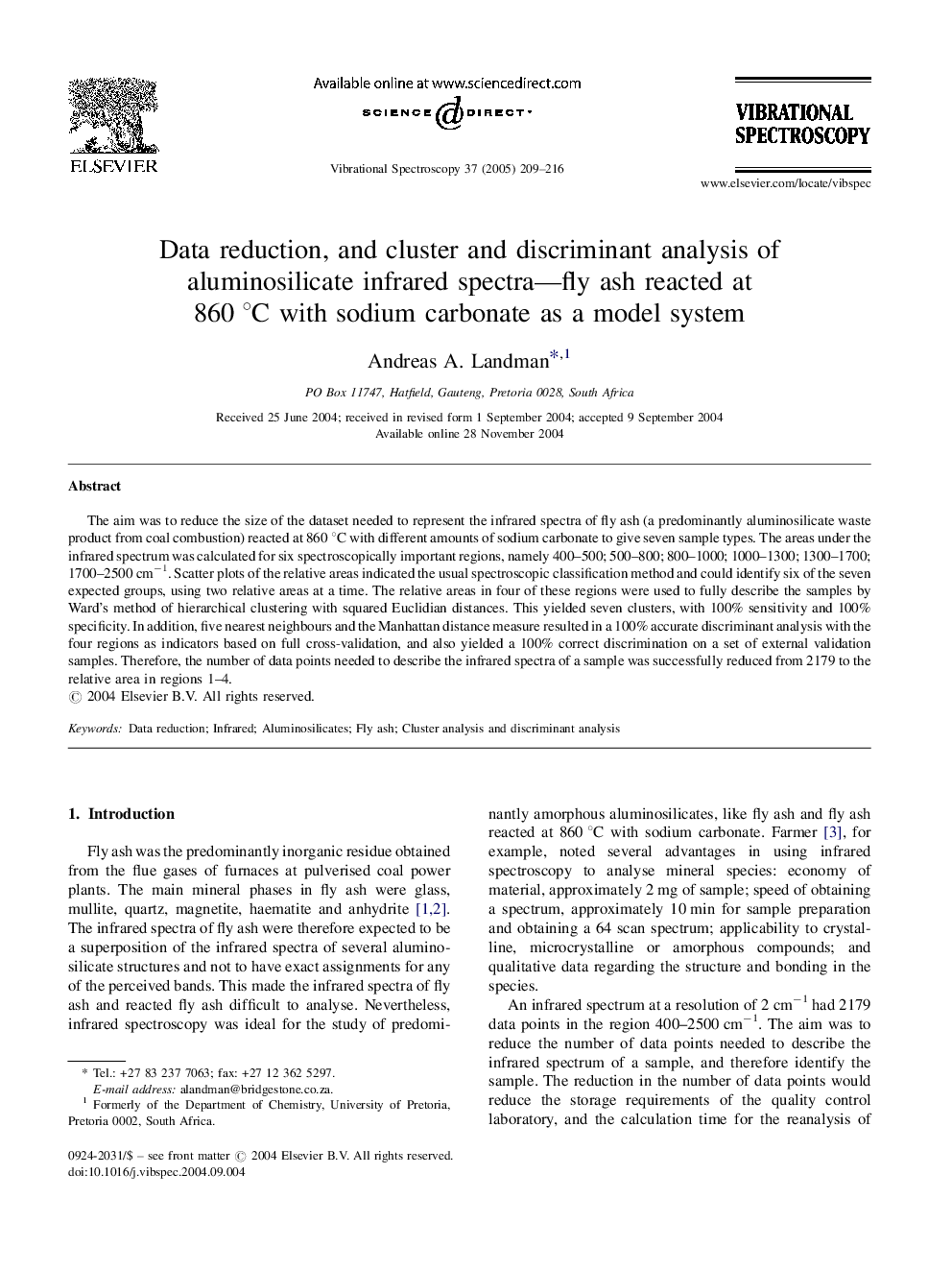| Article ID | Journal | Published Year | Pages | File Type |
|---|---|---|---|---|
| 10564666 | Vibrational Spectroscopy | 2005 | 8 Pages |
Abstract
The aim was to reduce the size of the dataset needed to represent the infrared spectra of fly ash (a predominantly aluminosilicate waste product from coal combustion) reacted at 860 °C with different amounts of sodium carbonate to give seven sample types. The areas under the infrared spectrum was calculated for six spectroscopically important regions, namely 400-500; 500-800; 800-1000; 1000-1300; 1300-1700; 1700-2500 cmâ1. Scatter plots of the relative areas indicated the usual spectroscopic classification method and could identify six of the seven expected groups, using two relative areas at a time. The relative areas in four of these regions were used to fully describe the samples by Ward's method of hierarchical clustering with squared Euclidian distances. This yielded seven clusters, with 100% sensitivity and 100% specificity. In addition, five nearest neighbours and the Manhattan distance measure resulted in a 100% accurate discriminant analysis with the four regions as indicators based on full cross-validation, and also yielded a 100% correct discrimination on a set of external validation samples. Therefore, the number of data points needed to describe the infrared spectra of a sample was successfully reduced from 2179 to the relative area in regions 1-4.
Related Topics
Physical Sciences and Engineering
Chemistry
Analytical Chemistry
Authors
Andreas A. Landman,
